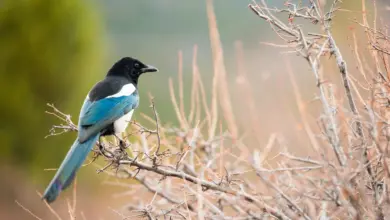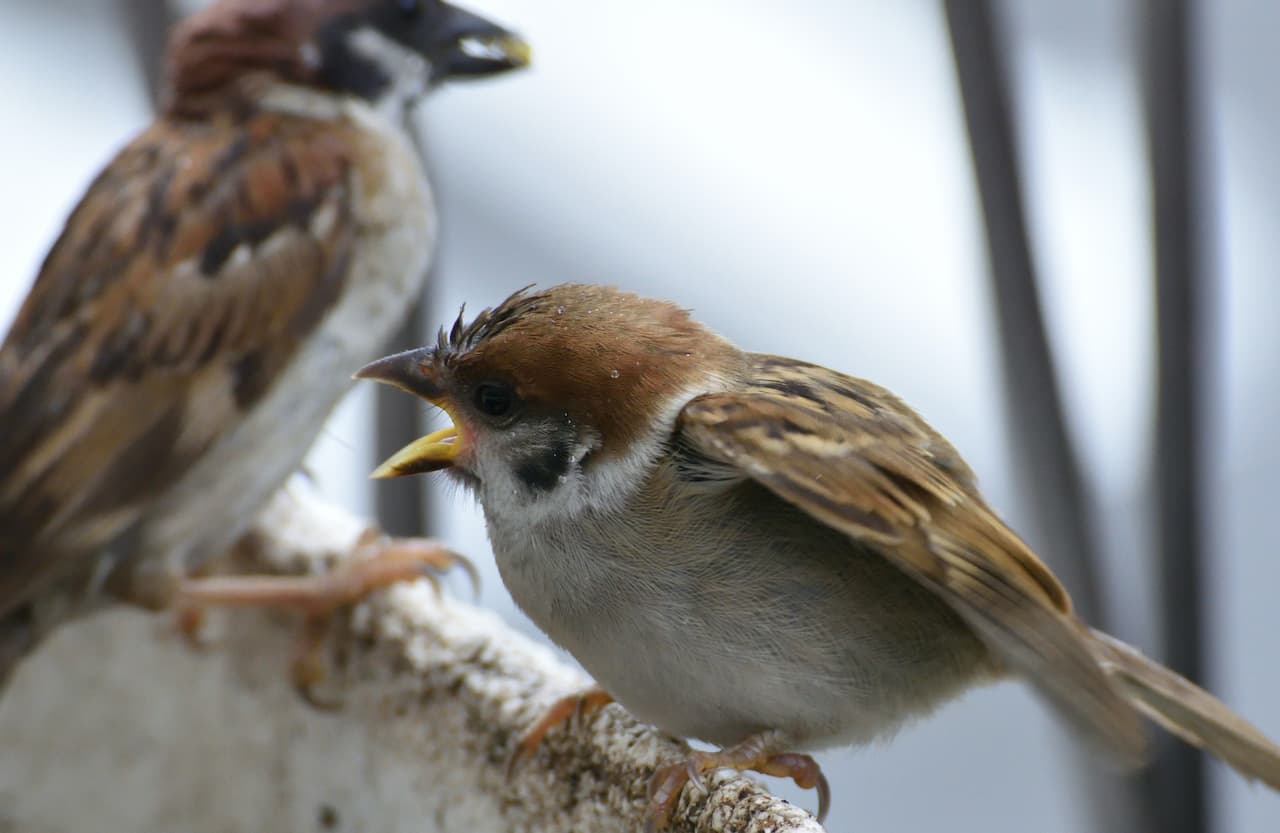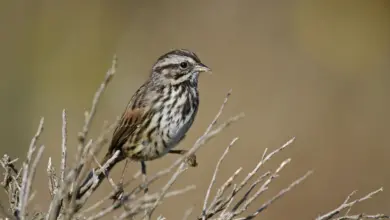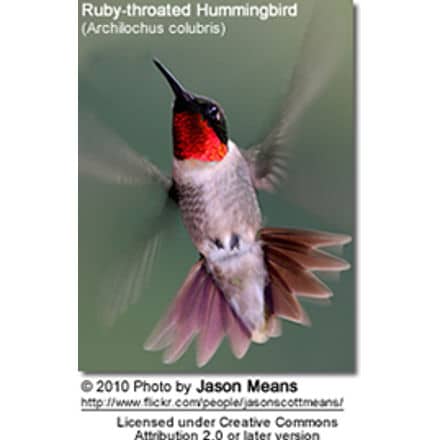Hummingbirds found in Kansas, USA
Hummingbirds found in the USA (by U.S. State) … Canada … Mexico … Puerto Rico … Jamaica … Honduras
Hummingbird Information … Hummingbird Species Photo Gallery
The following 9 hummingbird species (with photos) have been reported in Kansas.
WHITE Hummingbird Sightings (Leucistic / Albino)
Allen’s Hummingbirds, Selasphorus sasin – Rare vagrants – The Allen’s Hummingbird is often confused with the Rufous Hummingbird, but the Allen’s can be identified by the green back whereas the Rufous Hummingbird has a coppery back.
The male has a throat that ranges in color from orange-red to yellow-orange, a back that is bright green, a rump that is rufous and its tail feathers are rufous tipped in black.
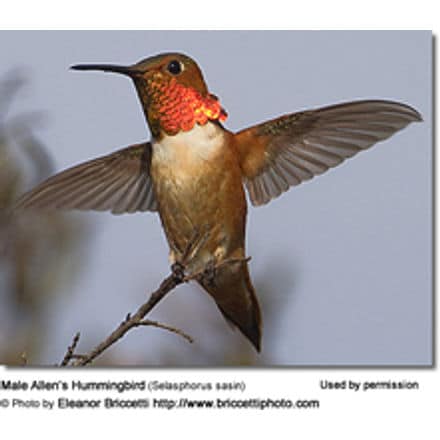
Anna’s Hummingbirds (Calypte anna)
One of the larger and the most vocal hummingbirds in the United States, where it is the only species to produce a song; specifically the males produce a complex series of scratchy noises, sounding like a sharp “chee-chee-chee; when moving from flower to flower, they emit toneless “chip” vocalizations. All other hummingbirds in the United States are mostly silent.
They are well known for their territorial behavior; the male makes elaborate dive displays at other birds and sometimes even at people. At the bottom of their dives, they produce high-pitched loud popping sounds with their tail feathers.
Males have glossy dark rose-red throats and crowns, which may appear black or dark purple in low light. The underside is mostly greyish; and the back metallic green.
Females have light grey chests with white and red spotting on the throat, greenish back and white tipped tails.
They resemble the Costa’s Hummingbirds, but the male’s Costa’s Hummingbird‘s gorget (throat feathers) is longer than that of the Anna’s. They are larger than the Rufous Hummingbirds and lack the rusty coloration of the Rufous Hummingbirds.
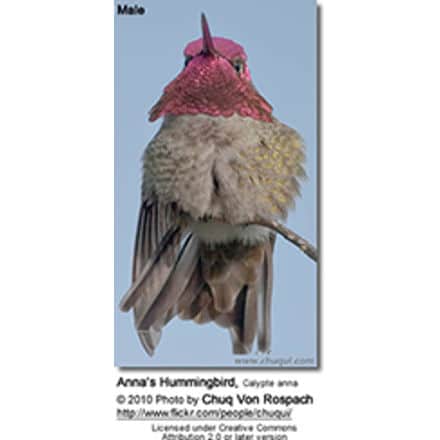
Black-chinned Hummingbirds, Archilochus alexandri
The male has a black, shimmering throat with a purple edge and pale feathers below that create a collar. However, unless the light is just right, the head looks all black. His back is green and there are some green feathers covering the chest.
The female is pale below (sometimes with a slightly speckled throat) and her back is green.
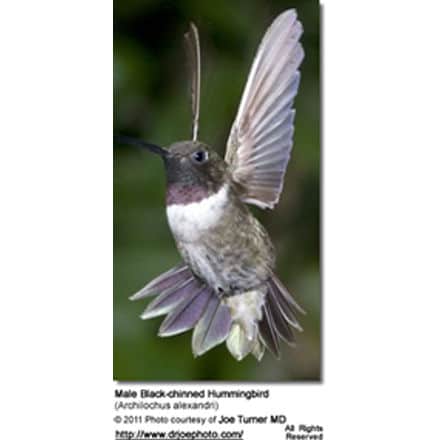
Broad-tailed Hummingbirds, Selasphorus platycercus – Migratory hummingbirds breed across mountain forests and meadows throughout the Western United States from eastern California and northern Wyoming south through Great Basin and Rocky Mountain states to southern Arizona, western Texas and Kansas. Move south to winter in Mexico, Guatemala and, occasionally, El Salvador.
Males can most easily be identified by their iridescent, rose-red throats, white chest feathers and metallic green back and crown and their rounded tails. The males’ tails make whistling noises in flight.
Females lack the flashy throat patch of the male and are mostly pale below. Their white-tipped outer tail feathers are rust-colored close to the body and blackish in the center; the tail feathers in the center range from green to blackish.

Calliope Hummingbirds, Stellula calliope –Seasonal Migrants – Migrate south or east for the winter
The smallest breeding bird in North America. They are most easily confused with the Rufous Hummingbirds and the Broad-tailed Hummingbird.
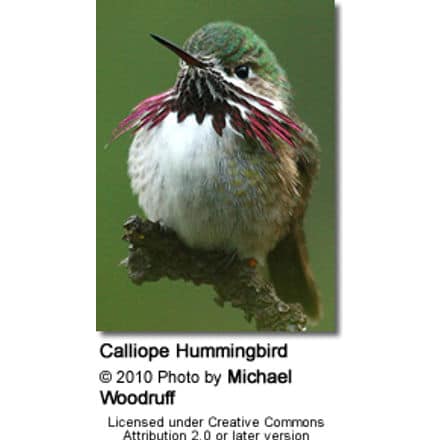
Costa’s Hummingbirds, Calypte costae – Rare vagrants
Males can easily be identified by the glossy purple crown and long, conspicuous throat feathers that project markedly down the side of the throats, giving it an elongated “moustache” appearance. The back is metallic green.
Females have greyish-green crowns (fop of the head) and backs. The chin and the plumage below are whitish, except for some black spotting on her throat. Her flanks are buffy-colored. She has a dark tail with white tips on the outer tail feathers.
They resemble the Anna’s Hummingbirds, but the male’s gorget (throat feathers) is longer than that of the Anna’s.
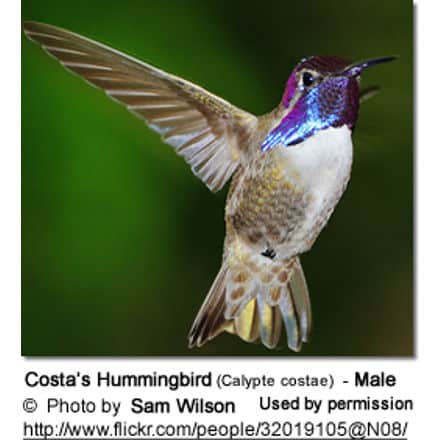
Magnificent or Refulgent Hummingbirds (Eugenes fulgens) – Rare vagrants
They are nearly twice as large as any other hummingbird species found in this State, and can often be identified by their size alone.
The male has a metallic green throat and a black chest. His forehead and crown are purple and the back is dark green.
The female plumage is less bright. Her chest is solid grey. Her back and crown are olive green. Her tail feathers are pearl-grey tipped.
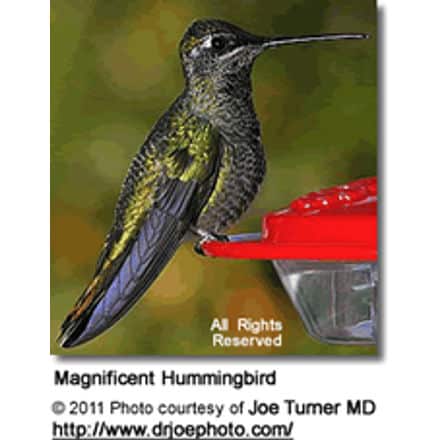
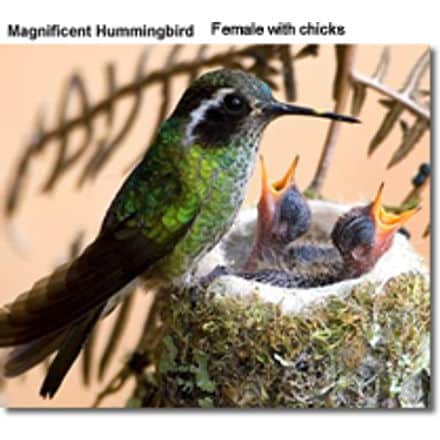
Ruby-throated Hummingbirds, Archilochus colubris – Rare – except during migration in eastern parts of Kansas – Mostly occur from April and are usually gone by the end of September.
The male has a ruby-red throat, a white collar, an emerald green back and a forked tail.
The female has a green back and tail feathers that are banded white, black and grey-green.
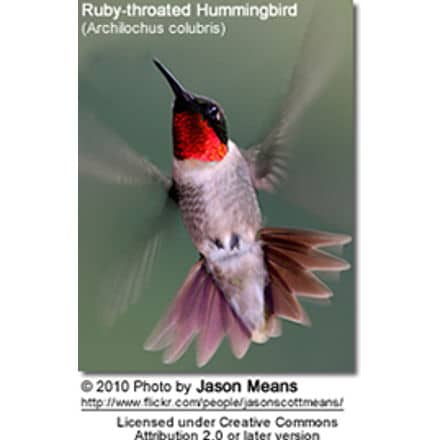
Rufous Hummingbirds, Selasphorus rufus – Seasonal – Arrive in their breeding territory in the US around April and migrate south to Mexico and Central America for the winter.
These hummingbirds are usually found in gardens and at feeders. These birds are fearless, and are known for chasing away other hummingbirds and even larger birds, or rodents away from their favorite nectar feeders and flowers.
Males can easily be identified by their glossy orange-red throats.
Females have whitish, speckled throats, green backs and crowns, and rufous, white-tipped tail feathers.
Rufous Hummingbird versus the similar Ruby-throated Hummingbird (Identification)
The favorite feeding plants for Hummingbirds in Kansas are:
Many hummingbirds favor red blossoms with a tubular shape (but some species prefer other colors). Hummingbirds feed readily on pink, blue, orange, peach and purple flowers.
- Anise Sage (Salvia guaranitica) – blue flowers. One of hummingbird favorites. Also: Salvia pensetmonoides
- Hummingbird Mints — (Agastache cana and Agastache rupestris / Agastache ‘Acupulco Salmon and Pink’ ) – Perennial; grows quickly; very fragrant.
- Flowering Maple (Abutilon sp.) – Not cold resistant. Only survives the winter if brought indoors. A prolific bloomer with lots of nectar. A favorite feeding plant.
- Trumpet honeysuckle (Lonicera sempervirens)
- Texas Sage (Salvia coccinea), Salvia ‘Maraschino’ (Bush Salvia)
- Red Hot Poker (Tritoma)
- Bee Balm (Monarda)
- Penstemon barbatus
- Crocosmia ‘Lucifer’
Attract Hummingbirds to YOUR Garden!!
Beauty Of Birds strives to maintain accurate and up-to-date information; however, mistakes do happen. If you would like to correct or update any of the information or even submit an article or pictures, please contact us. THANK YOU!!!

